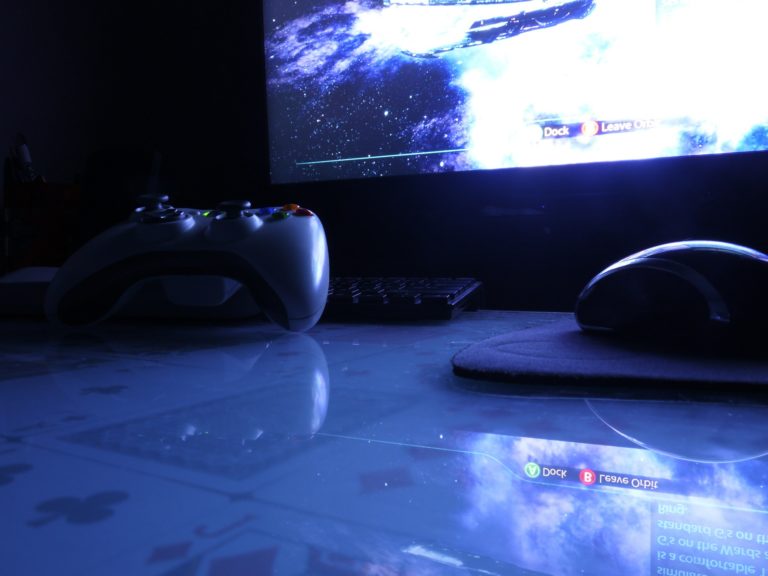What is the best refresh rate for gaming?
Table of Contents

When building a gaming PC, builders spend hours looking for the perfect components to provide the best performance within their budget. Smooth frame rates and playing games without any stuttering or crashing are usually the prime goals of anyone looking to put together a gaming rig.
With a high-end gaming PC, you’ll be able to play your favorite games with higher frame rates, allowing you to take advantage of high refresh rate monitors. A high refresh rate monitor will make games look more fluid and feature a lower response time in most cases, making it possible to react faster in some situations.
High refresh rate monitors may seem like a nice addition to your gaming setup at first glance, but once you step into the world of higher refresh rates, you may never be able to go back. Games will begin to feel more responsive and fluid as your screen refreshes the image faster.
The higher the monitor’s refresh rate, the smoother games will feel, but it may not always be the best option for everyone. From a competitive standpoint, a 360Hz monitor will outclass a 144Hz monitor every day of the week. You’ll need to consider a few aspects before purchasing yourself a high refresh rate monitor. Doing so will define the optimal refresh rate your system can support.
Based on pure specs, there will always be an all-around best monitor, but the question will be whether a monitor will suit your system. This will be one of the deciding factors when it comes to picking up a suitable monitor. If you’re looking for the best refresh rate for gaming, you’ll need to test your system’s boundaries in your favorite games and decide based on the results. Going with an overkill or an underwhelming option will be equally problematic.
Best refresh rate for high-tier competitive gaming
240 to 360Hz
Most competitive monitors cap out around 240Hz to 360Hz. If you’re a competitive gamer and your system can achieve frame rates higher than 240 in your favorite game, then a monitor in this range will be the best choice for you.
It won’t count if you can get those frames when you’re staring at a wall, though. You should be able to average 240 plus frames, equivalent to your monitor’s refresh rate, so you can take full advantage of your monitor. You’ll still be able to use the monitor, but you might not average the required frames. Choosing a monitor with a lower refresh rate will also be cheaper.
Best refresh rate for variety gaming
165Hz
165Hz is the middle ground between 144 and 240Hz monitors. If your system can kick in more frames than 144 frames per second while failing to achieve anything above the 200 range, running a 144Hz refresh rate monitor can be considered settling.
A 165Hz monitor offers the best of both worlds, and they’re also more accessible than 240Hz to 360Hz monitors in terms of price.
Best refresh rate for everyday competitve gaming
144Hz
A 144Hz refresh rate is every gamer’s stepping stone to high refresh rate monitors. It’s practically the gold standard, meaning even if you have intentions of going for anything higher than 60Hz, a 144Hz monitor is the least you should have as a competitive gamer.
When it comes to noticing how much more fluid a monitor is compared to another, the difference between a 60Hz monitor and a 144Hz one will be the most noticeable. As you move higher up the ranks, you might find it hard to tell the difference, though.
Compared to monitors with higher refresh rates than 144Hz, you’ll find a number of options that can be considered bargains.
Best refresh rate for casual gaming
60Hz
During the early days of gaming, 60Hz monitors were all gamers had. They were the only option out there before high refresh rate monitors stole the show. While there’s still nothing wrong with them, using a 60Hz monitor in highly competitive games will leave you at a disadvantage.
Despite being a minor advantage, opponents with high refresh rate monitors can still see you marginally faster than you can see them, allowing them to react quicker. In most cases, the difference comes down to milliseconds, but if you’re a competitive gamer, you’ll want those milliseconds to be in your favor.
On the bright side, a 60Hz monitor can end up being the second screen in your setup if you choose to upgrade to a high refresh rate monitor.
Before you go shopping for high refresh rate monitors, it’s important to test your system in your favorite games. Load up your favorite titles and play a few rounds with software that displays your frames, like MSI Afterburner.
Check out your average frame rates alongside maximum and minimum values to see if they’re within the range of the refresh rate of your next monitor. If you’re averaging below, you can always lower some settings to give yourself a couple of extra frames.
Your other option will be upgrading your PC’s shortcomings. If you have an older GPU, it may finally be time to upgrade. If you have a brand new GPU, but you seem to be lacking results when it comes to averaging decent frame rates, it might be an old CPU holding it back, meaning a CPU upgrade can also boost your performance.
Players on gaming laptops can try out cooling pads since reduced temperatures can help gaming laptops push out more frames. If you have an old laptop, investing in a gaming-grade one with a high refresh rate screen of his own can also be an option.
See Dot Esports DealsncG1vNJzZmicn6mytLzOq6usZpOkunC0wKubsJmimnyvsdasZrCgkal6qr%2BMrZ%2BeZZKawLV50Z6dq52jnXqzrdOeZJ%2BnomK0ornIp54%3D